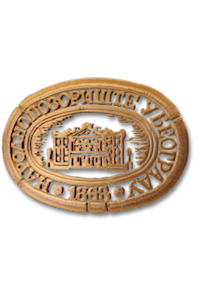mid-September 1791, Mozart returned to Vienna from Prague, where the premiere of his opera Titus was performed . He immediately set about finishing the Magic Flute , which he started in March; He finished the score on September 28, and the premiere was held only two days later, on September 30. The reception with the audience was not special, but it grew during the evening ... Mozart visited the performances of his opera several times, in the chosen company, and was looking forward to receiving the work. He died on December 5 of the same year, so he could not enjoy the fruits of his work as Shikaneder. The sources for the Magic Flute are many, but the most important is the fairy tale Vilanda Lulu or the Magic Flute from the collectionJinistan . The book, printed in 1786, also contains the story Wise Boys , in which these little sages advise a young man who wants to save his sweetheart: "be steadfast, patient and silent." The magic flute and the ringing of bells also occur. Schikaneder had previously performed the opera Stone of Wisdom or Magic Island , with music by various authors, which also contained elements from Jinistan . The novel about Setos by Jean Terrason was also very popular at that time, and the German translation by Matthias Claudius was very widely read. Wise King Setosis the forerunner of the opera Sarastra, and the act of consecration is well described. The motifs of the snake, the Queen of the Night and her ladies also appear in this book, then the flute itself, which is the creation of Osiris, as well as the three boys. Consecration is performed after severe trials in passing through water and fire. Some scenes of the opera are almost literally taken from the novel. Let's not forget that both Mozart and Schikaneder were members of one lodge of freemasons, and that they presented some of the customs of the lodge in their opera, which always attracted Masons around the world ...
Ha printed poster for the first performance of the Magic Flute, September 30, 1791, reads: "out of attention to the merciful and respectful audience and out of friendship for the composer, Mr. Mozart will conduct the orchestra himself today." The orchestra had 35 members, including 5 first, 4 second violins, 3 cellos and 3 double bass. There were also 12 different decorations and 10 changes on the open stage ... Mozart also played solo on the Glockenspiel. Although there was no complete success at the premiere, the audience correctly and with dignity evaluated the masterpiece of Mozart and Schikaneder at the rerun, so that the Magic Flutescreened almost every night. Mozart was at performances several times, and he also invited guests to the opera ... Mozart wrote to Constantius on October 7, 1791: "I am just coming from the Opera, it was full as always, a duet of man and woman usually, and in the second act a third of a boy, but what makes me most happy is the quiet confession - you can see how this opera grows ". By the end of October, the Magic Flute was shown 24 times, by November 1792 there were 100, and by October 22, 1795 - 200 performances. The opera quickly conquered Prague, Frankfurt, Weimar, Berlin, and Hamburg. In 1801, it was given in today's unimaginable processing in Paris, in 1811 in London, in 1816 in Milan, in 1818 in St. Petersburg, and in 1832 in Philadelphia.









